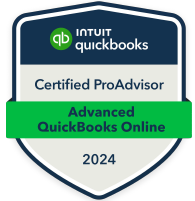Take Home Earnings & Tax Calculator
Find out how much tax you’ll owe and what your net income will be with our take-home earnings calculator, tailored to your yearly salary and dividend earnings.
Limited Company Owner
If you’re a limited company contractor or an investor, understanding how dividends work can help you manage your finances more effectively. Dividends represent a share of a company’s profits distributed to its shareholders, typically after corporation tax has been deducted at rates ranging from 19% to 25%, depending on your company’s taxable profits for the 2025/26 tax year. As a contractor running a limited company, you have the freedom to decide when to pay yourself dividends - whether monthly, biannually, annually, or whenever your company has excess profits available - offering greater flexibility compared to the standard quarterly distributions often seen with larger corporations.
Dividends
For the 2025/26 tax year (6 April 2025 to 5 April 2026), you benefit from a personal allowance of £12,570, meaning you can earn this amount tax-free from any income source, including dividends, if it’s your only income. On top of that, there’s a dividend allowance of £500, so the first £500 of dividend income is also tax-free, regardless of your other earnings. Combined, this allows you to receive up to £13,070 in dividends without paying tax, provided you have no other taxable income. However, dividends are taxed after other income sources, such as salary, are accounted for. Dividend tax rates are lower than income tax rates, making them a tax-efficient way to draw income. For 2025/26, the rates are: 0% within the personal allowance (£0–£12,570), 8.75% for the basic rate band (£12,571–£50,270), 33.75% for the higher rate band (£50,271–£125,140), and 39.35% for the additional rate band (over £125,140).
Salary
By contrast, if you take a salary between £12,571 and £50,270, it’s taxed at 20% for income tax, plus an 8% National Insurance contribution, totaling 28% - a much higher rate than the 8.75% you’d pay on dividends in the same basic rate band. The key difference here however is that salary costs are tax-deductable against corporation tax, whereas dividends are not. Unlike salaries, which are taxed at source through Pay As You Earn (PAYE), dividends aren’t subject to National Insurance, and you’re responsible for reporting them to HMRC via a self-assessment tax return at the end of the tax year. If your dividend income exceeds £10,000, you must file a self-assessment; if it’s between £500 and £10,000, you can contact HMRC to adjust your tax code to collect the tax through your salary or pension.
Employment Allowance
The Employment Allowance, from April 2025, allows eligible employers to reduce their annual Class 1 Employers NICs by up to £10,500 per tax year, a significant increase from the previous £5,000 limit, as announced in the 2024 Autumn Budget. However, if you are the sole director and only employee of your limited company, earning above the secondary threshold of £5,000, you are not eligible to claim this allowance, as the scheme is designed to encourage businesses to hire additional staff. Eligibility becomes available if your company has at least one other employee - or two directors - earning above this threshold, enabling you to offset your employer’s National Insurance liability and potentially lower your overall tax burden. Please note that our calculator does not factor in the Employment Allowance, so your actual National Insurance contributions may vary if you qualify for this relief.
Personal Allowance Reduction
If your combined earnings exceed £100,000 in the 2025/26 tax year, your personal allowance of £12,570 begins to decrease, with the allowance reducing by £1 for every £2 of income above £100,000, completely phasing out at £125,140; this results in an effective income tax rate of 60% (or 62% including NICs) in this income range due to the combined impact of the higher rate tax and the tapering effect. Therefore effective tax planning around this earnings level can have a drastic effect on tax reductions.
Contact us if you would like to speak to one of our tax specialists on advice around this topic.



